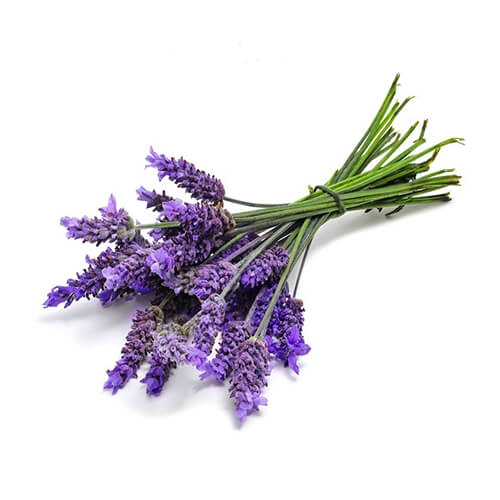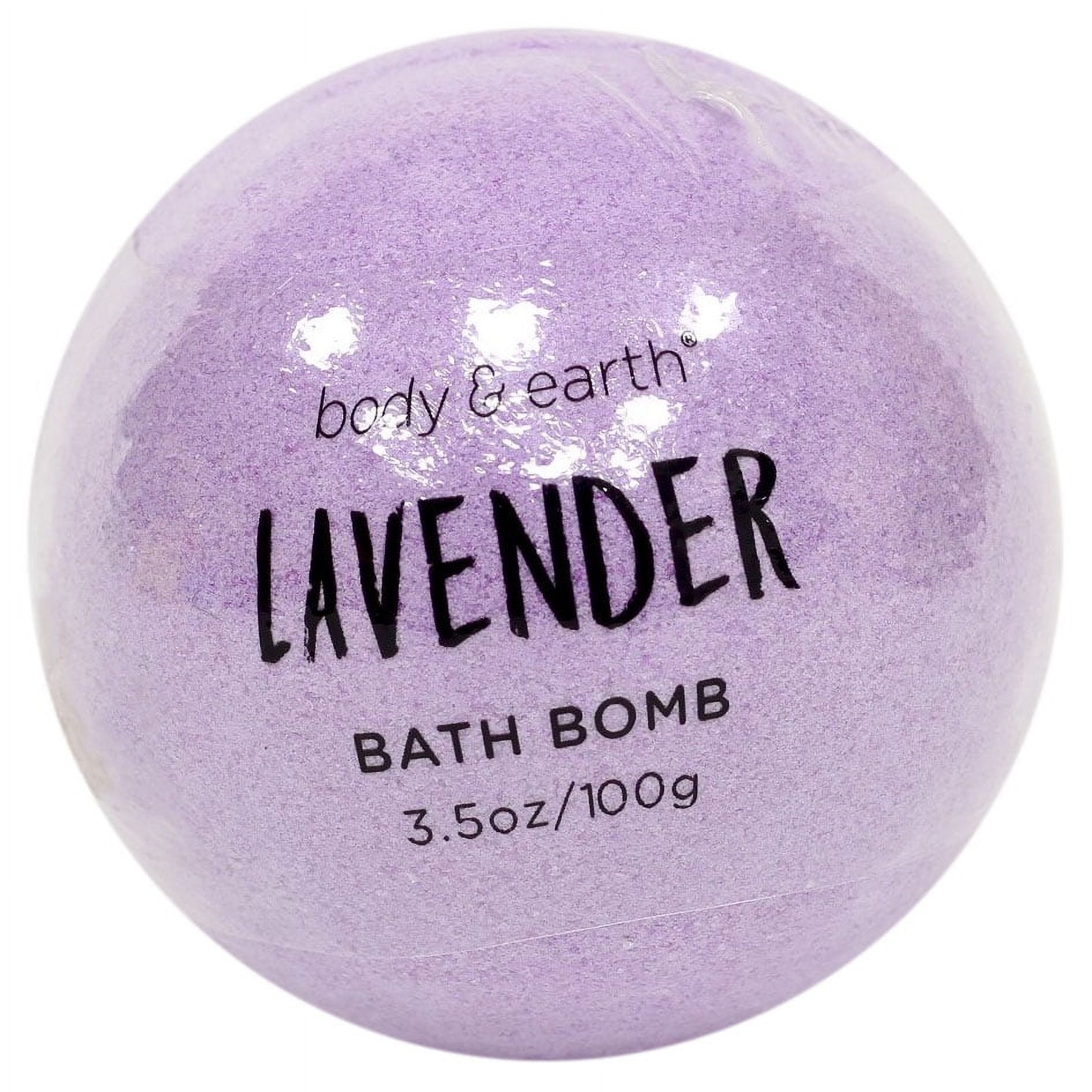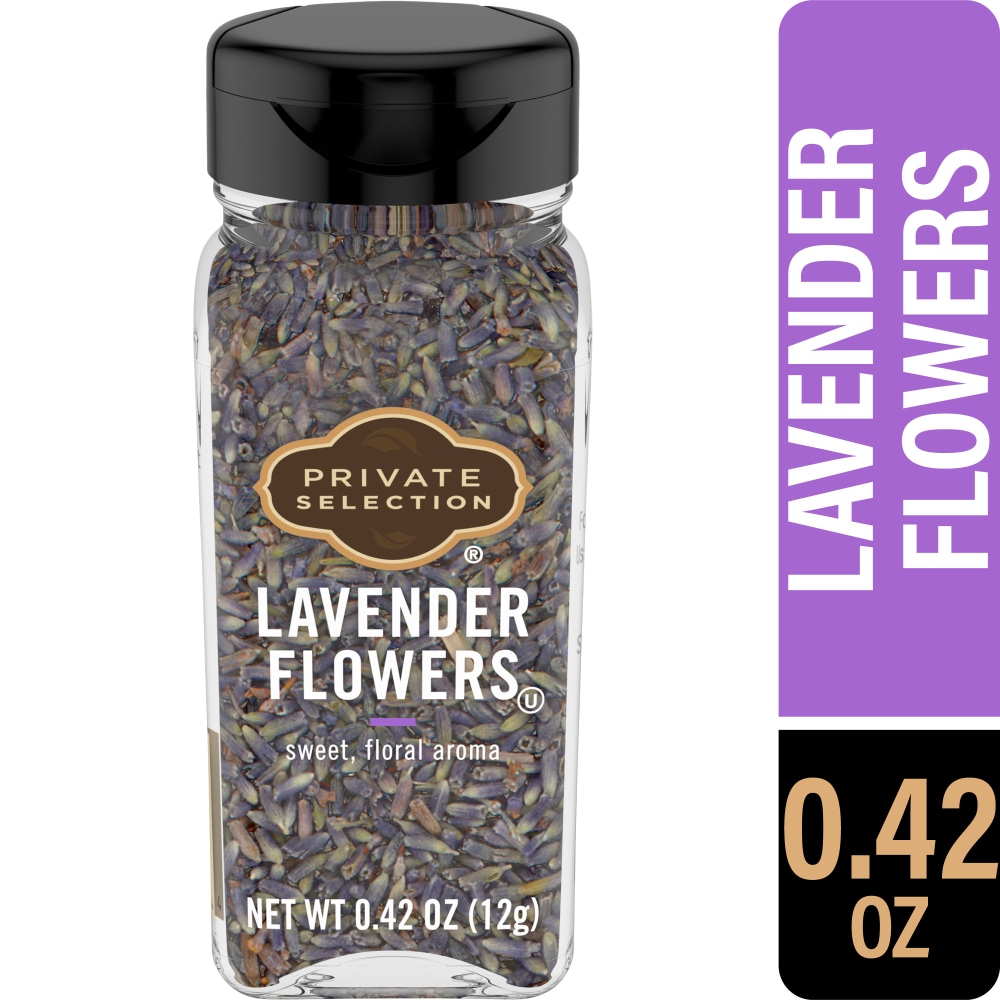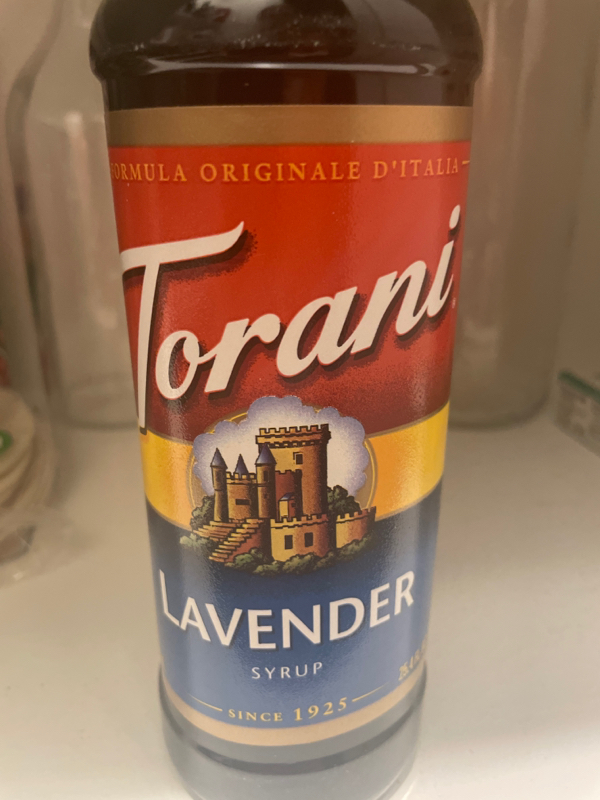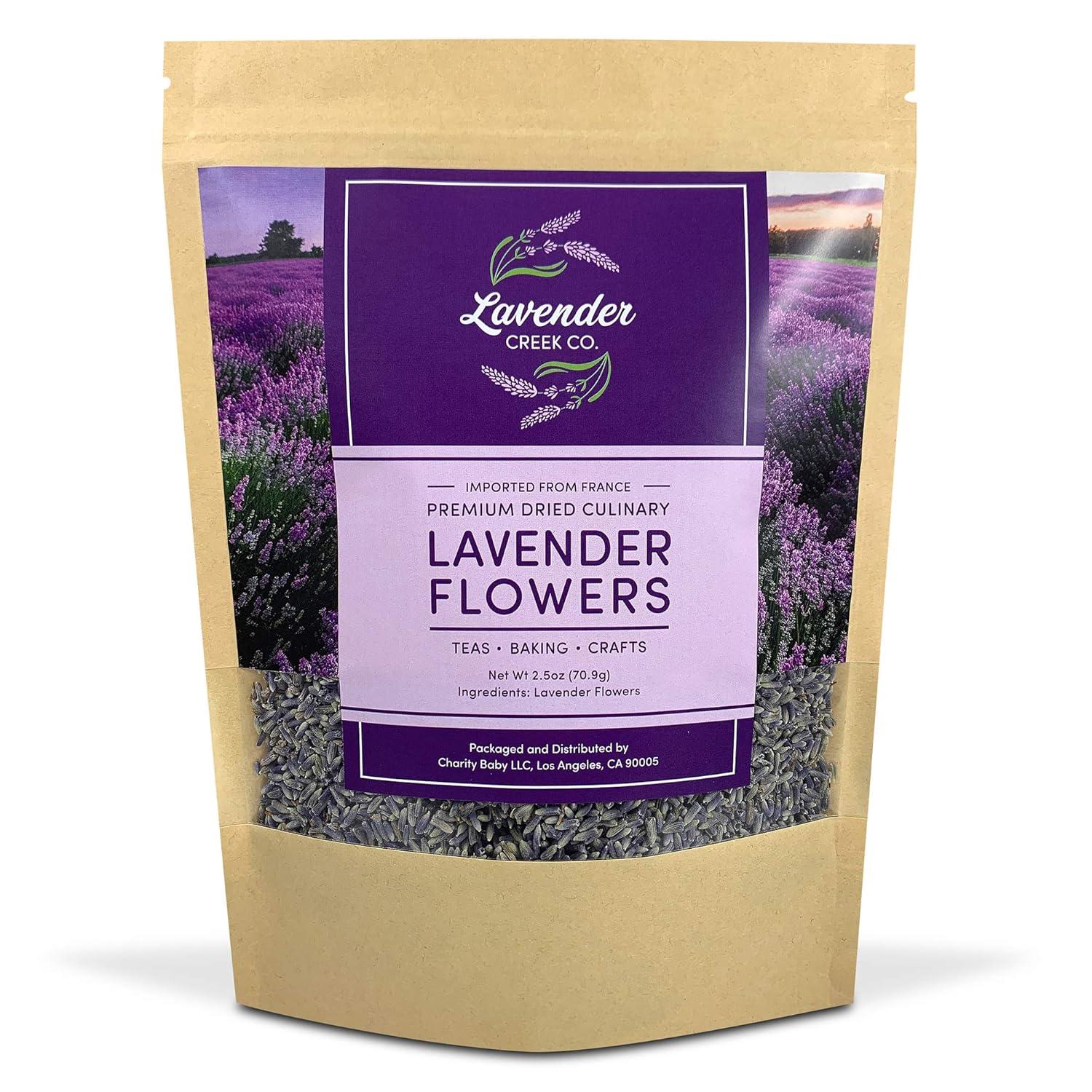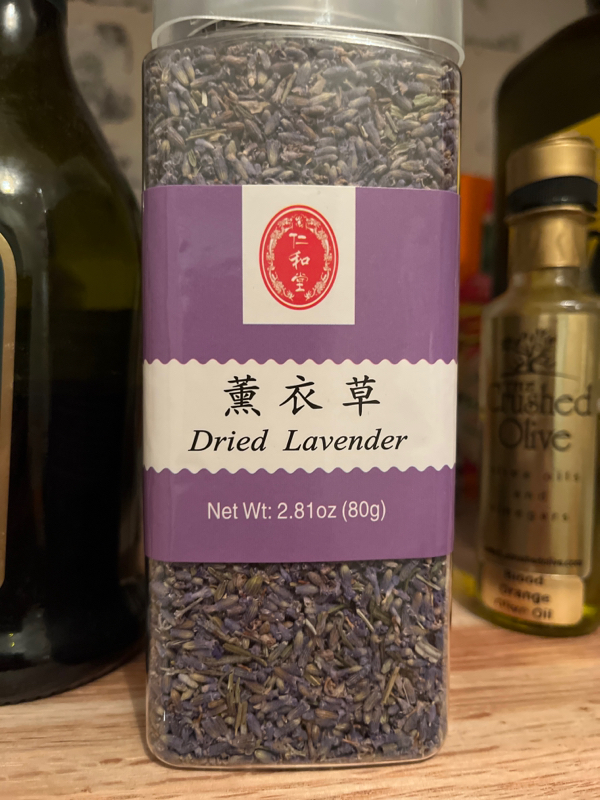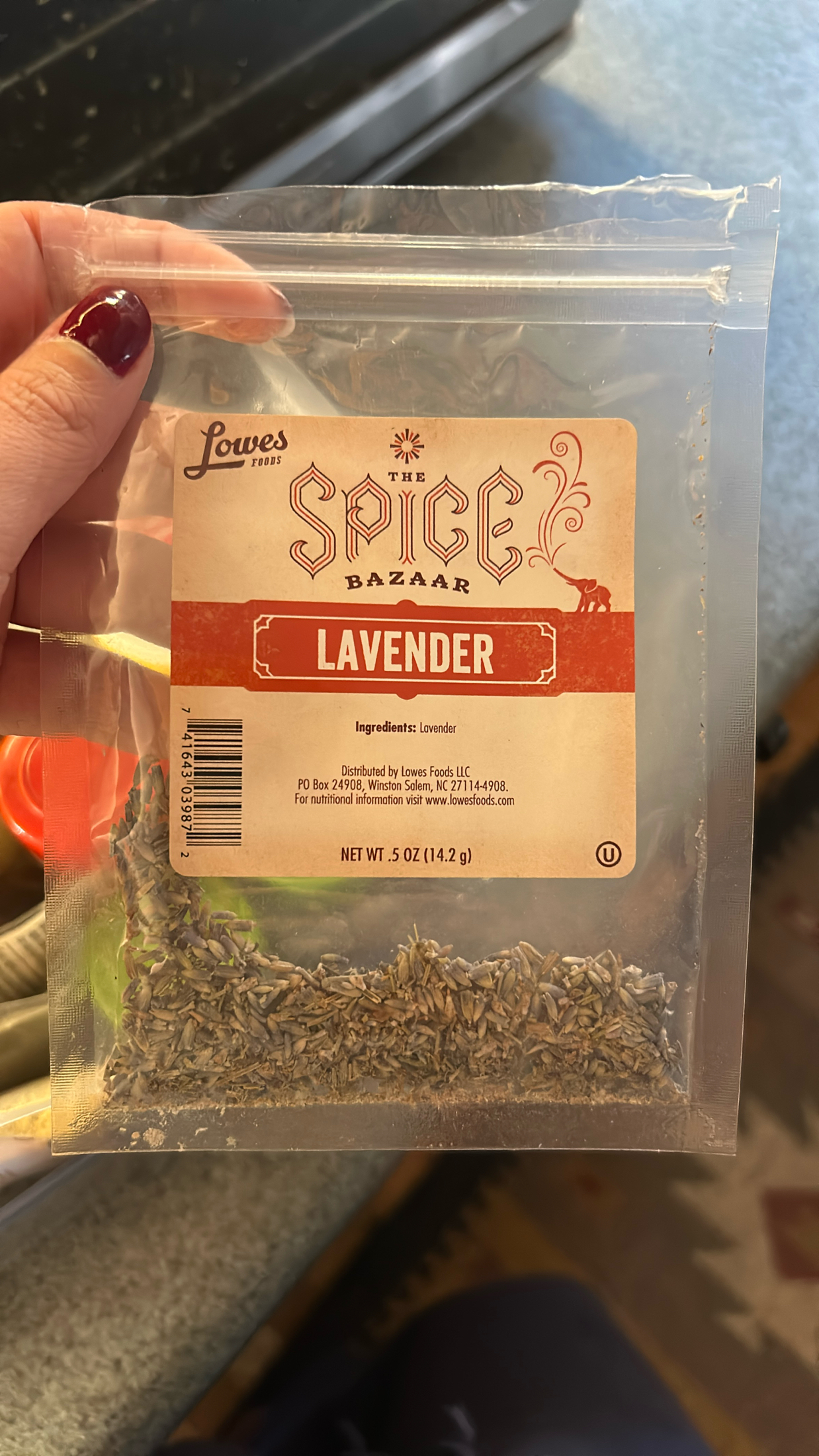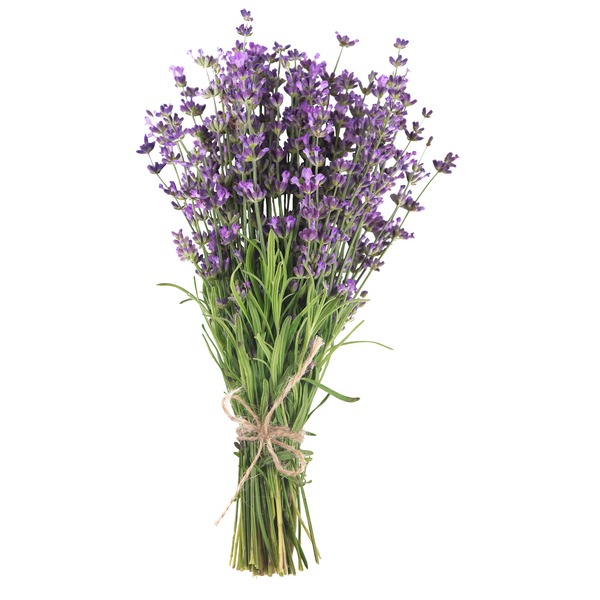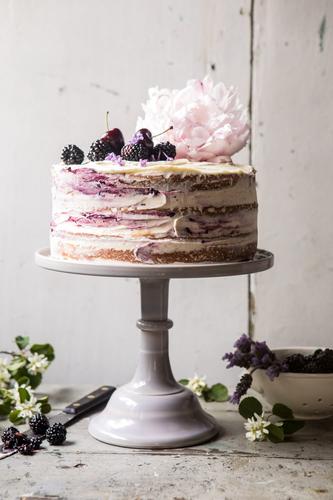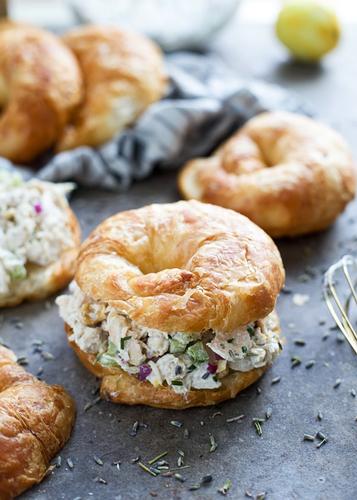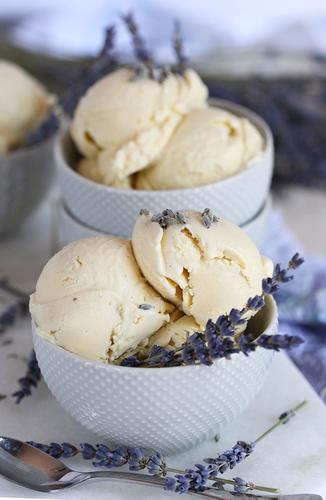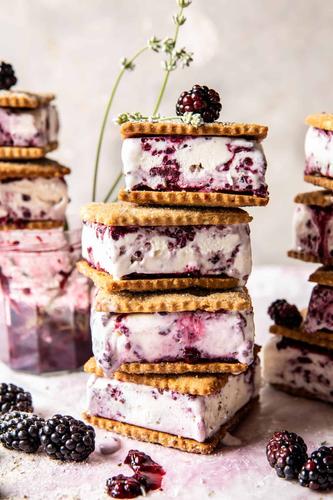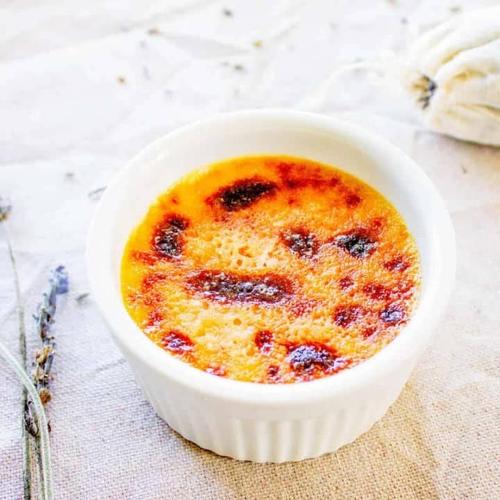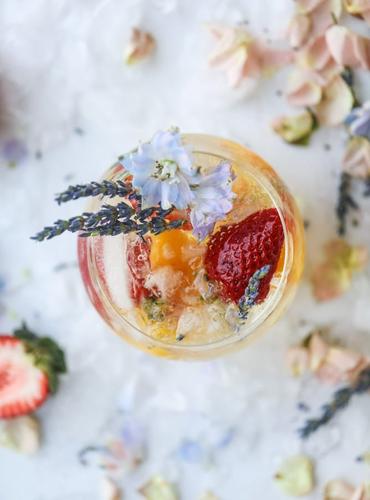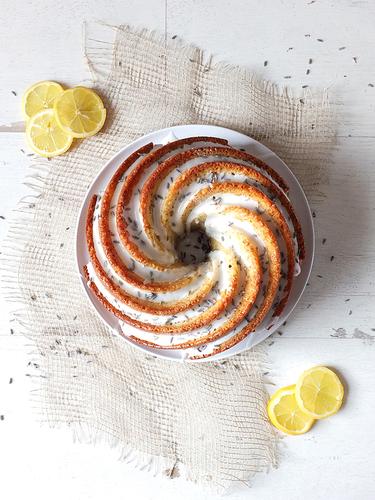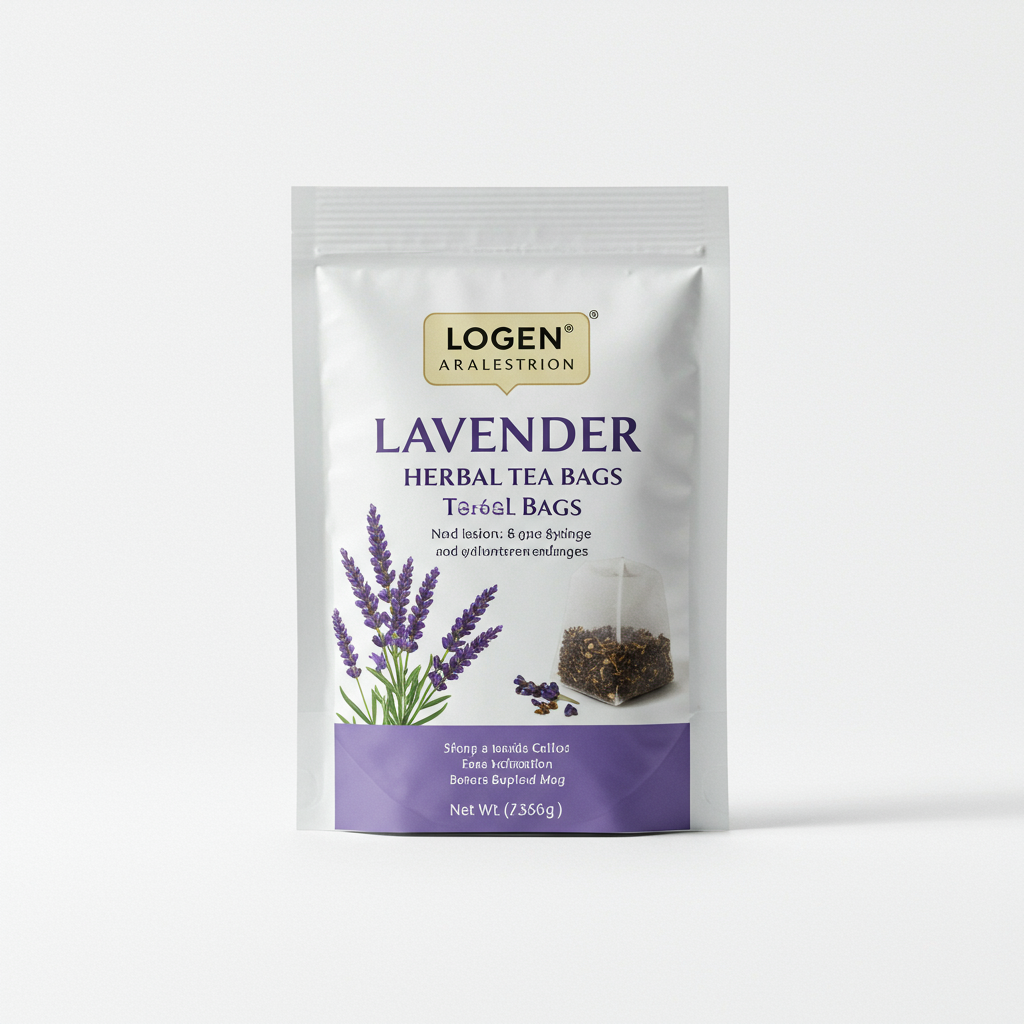DESSERTS
BEVERAGES
Lavender
Lavender is a versatile flowering herb belonging to the mint family, known for its calming fragrance and striking blue-violet flowers. Native to the Mediterranean, Middle East, and India, lavender has been used for centuries for its aromatic, culinary, and medicinal properties. The plant's essential oils are used as a popular ingredient in aromatherapy, skin care products, and perfumes, while the dried flowers can be used in cooking, teas, and home decorations.
In culinary applications, lavender infuses dishes - particularly desserts and baked goods - with a delicate floral and slightly minty flavor. The blossoms are often incorporated into sweet recipes, such as cookies, cakes, and ice cream, or paired with other herbs like rosemary or thyme to enhance savory dishes. Lavender is also commonly found in herbal tea blends, which are a helpful aid for relaxation. When cooking with lavender, it is essential to use culinary-grade, pesticide-free buds, and to introduce the herb sparingly, as its flavor can be quite potent.
100%
CARBS
0%
FAT
0%
PROTEIN
134 Lavender Products
Body & Earth Relaxing, Nourishing and Luxurious Lavender Bath Bomb
Private Selection® Lavender Flowers Shaker
Morton & Bassett Spices Lavender
Lavender Syrup
Private Selection® Lavender Flowers
Dried Culinary Lavender Buds
Dried Lavender
Lavender
Burpee® Herb True Lavender Lavandula Angustifolia Seeds
Organic Lavender
Used In 10 Recipes
765
Blackberry Lavender Naked Cake with White Chocolate Buttercream
2
Lavender Chicken Salad Sandwiches
Lavender Vanilla Ice Cream Recipe
16
Blackberry Lavender Ice Cream Sandwiches
Pistachio Cake with Orange Cream and Lavender Honey
22
Lavender Creme Brulee Recipe
2
Lavender Sangria
1
Lavender & Lemon Bundt Cake
Lavender Is Frequently Used With
Lavender FAQ
When it comes to cooking with lavender, one common pitfall is using too much. Despite its delicate aroma, lavender has a rather potent flavor that can overpower a dish if not used sparingly. Understanding how to balance lavender with other flavors is key. Given its pungent nature, pairing it with other bold flavors helps prevent it from taking over the dish. When using it in savory dishes, lavender pairs well with herbs like thyme, rosemary, and sage. For sweet treats, combining lavender with honey or vanilla adds depth to the floral note of this herb.
Another common mistake is using lavender directly from the garden or decorative flowers without considering whether it's safe for consumption. Remember to only use culinary-grade, pesticide-free lavender for cooking. Lavender intended for display may be chemically treated and thus not safe to eat.
To get the most out of lavender, use it sparingly till you achieve the desired flavor. Also, consider grinding the buds for a more subtle flavor or infusing them in liquid elements of your recipe to extract and evenly distribute the flavor. Besides using it fresh or dried in your cooking, you can also make lavender sugar or lavender-infused syrups for a fragrant addition to a variety of dishes.
Can you use any variety of lavender in cooking?
How can you balance the flavor of lavender in cooking?
How can you include lavender in savory dishes?
Why does my dish taste bitter when I use lavender?
Can I use the stems of lavender in cooking?
Is lavender in food safe to eat?
Is there a difference in taste between fresh and dried lavender?
Can you make your own lavender sugar?
What are some dessert recipes that use lavender?
How can I infuse lavender flavor into liquids for my recipes?
Expiration & Storage Tips
When does lavender expire?
Generally, dried lavender can last for two to three years if stored properly. As for lavender essential oil, it typically stays good for up to five years. Remember, these are estimates and individual products may vary, so always pay attention to the expiry dates on the packaging if available. If stored in the freezer, lavender's shelf life can be extended by about half a year to a year. Keep in mind that properly dried and stored lavender flowers will retain their color and fragrance for the longest possible time.
How do you tell if lavender is bad?
If your dried lavender has lost its vibrant color and no longer emanates its characteristic aroma, it may be past its prime. For lavender essential oil, if it smells off or different than when you first bought it, it might not be good anymore. Also, cloudy or thickened lavender oil can indicate that it's gone bad.
Tips for storing lavender to extend shelf life
• Always store dried lavender in an airtight container to prevent moisture from seeping in.
• Keep your lavender in a cool, dry place away from direct sunlight to protect its color and aroma.
• You can also store dried lavender in the freezer to prolong its life. Just make sure it's in a sealed container or bag to prevent it from absorbing odors. When you're ready to use it, let it come to room temperature first.
• Always keep lavender essential oil in its original dark-colored bottle as light can degrade its quality. If needed, you can also add a few drops of vitamin E oil to the bottle to prolong the oil's lifespan.
EXPIRES WITHIN
2 - 3.6
YEARS
Substitutes
Health Info
Macros
0g
CARBS
0g
FAT
0g
PROTEIN
Allowed on these diets
LOW FAT
HIGH CALCIUM
VEGETARIAN
KETO
PALEO
WHOLE 30
MEDITERRANEAN
LOW CARB
VEGAN
LACTOSE FREE
GLUTEN FREE
